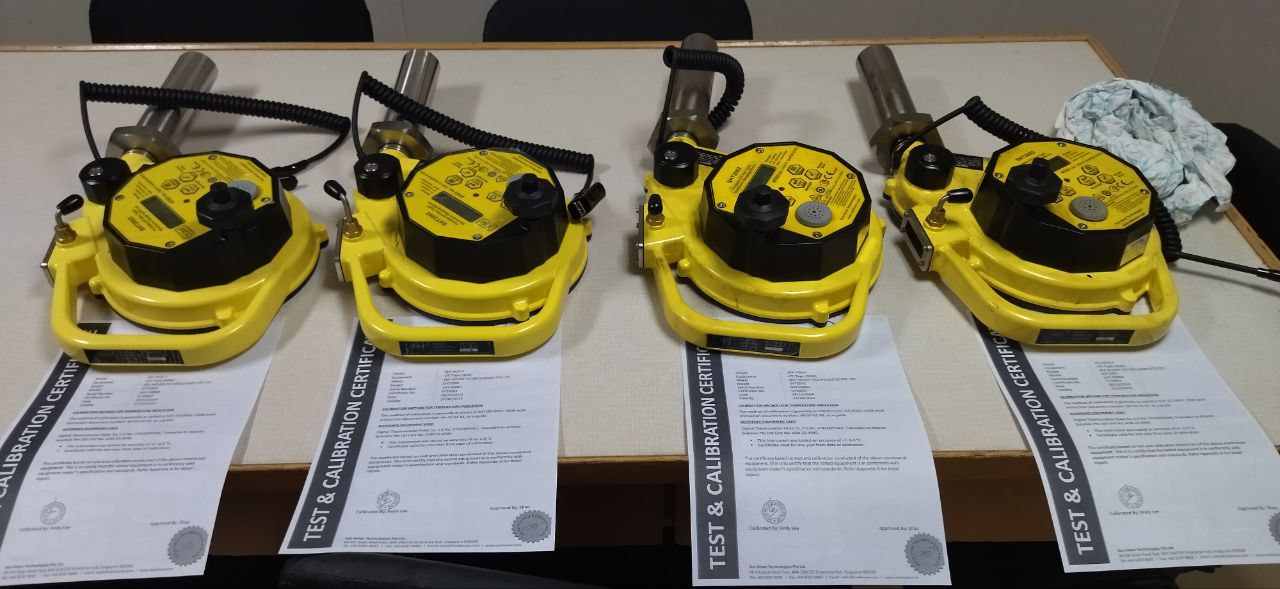
Inspection of UTI Equipment and Sampling Devices
Accurate measurement and representative sampling of liquid bulk cargoes require the use of properly maintained, calibrated, and certified equipment. Prior to any cargo gauging or sampling activity, thorough inspection of the UTI device and sampling equipment is essential to ensure accuracy, safety, and compliance with international standards such as API MPMS;ISO 3170/3171, and MARPOL Annex I.
- UTI (Ullage, Temperature, Interface) Device Inspection
- The UTI device is a portable closed gauging instrument used on tankers to simultaneously measure:
- All sampling operations must be performed using clean, appropriate equipment, under controlled conditions, and in line with industry standards such as API MPMS Chapter 8, ISO 3170, and IMO MARPOL Annex I for petroleum products.
- Ullage:
- Distance from the tank reference point to the cargo surface.
- Temperature:
- Internal cargo temperature (usually via a built-in platinum resistance thermometer).
- Interface:
- Water-oil interface using conductivity sensors (especially important in detecting free water or bottoms).
- Pre-Use Inspection Checklist:
- Calibration Certificate:
- Ensure the device has a valid calibration certificate (typically within the last 6 to 12 months) traceable to recognized metrological standards.
- Visual Inspection:
-
Check for physical damage, corrosion, or wear.
Confirm that tape markings (metric/inch scale) are legible and intact.
Inspect the probe for cleanliness and sensor integrity. - Battery and Electronics Check:
-
Verify the battery charge and proper functioning of the display.
Perform a self-check (if supported by the device) to confirm temperature and interface readings. - Sensor Test:
-
Check temperature probe response in ambient air.
Test interface detection in a known water-oil sample (if required). - Earthing (Bonding):
- Confirm that the bonding cable and clip are secure and functional to prevent electrostatic discharge during use in explosive atmospheres.
- Operational Standards:
-
Use in accordance with closed gauging procedures outlined in ISGOTT (International Safety Guide for Oil Tankers and Terminals).
Equipment must be intrinsically safe and ATEX-certified for use in hazardous zones. - Inspection of Sampling Equipment
- Proper inspection and preparation of sampling equipment ensure sample integrity and avoid contamination or cross-product interference.
- Equipment Types:
-
Bottle samplers (glass, PVC, stainless steel)
Zone samplers (bottom, middle, all-level/running)
Drip samplers (automatic manifold samplers)
Sample containers (glass bottles, cans, flasks with Teflon or aluminum caps)
Pre-Use Inspection and Cleaning: - Cleanliness Check:
-
All samplers and containers must be thoroughly cleaned, dried, and free from residue.
Use appropriate solvents or cleaning agents specific to the cargo type (e.g., toluene or hexane for hydrocarbons).
For edible or chemical cargoes, use food-grade or chemically compatible cleaning materials. - Physical Condition:
-
Inspect for cracks, corrosion, dents, or faulty seals.
Ensure sampler mechanisms (valves, stoppers) operate smoothly and seal properly.
Confirm no foreign material or moisture is present inside the sampling bottles. - Labeling Materials:
-
Check availability of non-reactive labels, sample seals, chain-of-custody forms, and tamper-proof security tapes.
Ensure all sample bottles are clearly and permanently marked. - Manifold Drip Sampler Check (if used):
-
Inspect valve function, flow regulation, and clean sample line.
Confirm sampler is MARPOL-compliant and collecting at a constant, proportional rate throughout transfer. - Documentation and Compliance
- Maintain logs of equipment inspection, including:
- Device serial numbers
- Calibration dates
- Cleaning procedures
- Visual inspection results
- Ensure compliance with:
- IMO MEPC.182(59) (for MARPOL-compliant sampling)
- ISO 3170 / 3171 (manual/automatic sampling)
- API MPMS Chapter 8 (manual sampling of petroleum liquids)
- Visual inspection results
- Proper inspection of UTI and sampling equipment is a non-negotiable standard in marine cargo operations. It safeguards measurement accuracy, maintains cargo quality assurance, and ensures alignment with industry regulations—ultimately protecting commercial interests and minimizing liability in custody transfer and quality disputes.
